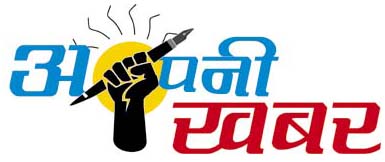Climate informed media reporting needed amidst increasing heatwaves

( Amitabh Pandey )
With the onset of warmer weather leading to the Indian summer
months, Climate Trends released a new study led by Dr James Painter from the University of
Oxford, analysing the Indian media coverage of the 2022 heatwaves in multiple languages across
the country. The study illustrates that 14% of English news articles and 24% of English news videos
made the connection to climate change in their reportage on the heatwaves. Meanwhile the
regional language media demonstrated a lower percentage share of climate attribution to
heatwaves. Hindi has a 7% share, Marathi 6% and Telugu 3%. Most of the Indian media relied on
scientists, meteorologists and scientific bodies to build the case for climate change which allowed
lesser chance of scientifically inaccurate binary causation statements like climate change is ‘solely’
responsible for the heat event. In contrast, a large portion of the Hindi language media relied on
binary causation statements.
Dr James Painter, Research Associate at Reuters Institute for the Study of Journalism,
University of Oxford and lead author of the study said, “Climate science tells us heatwaves in
India are only going to become more intense. This report suggests that Indian journalists - like
journalists all around the world - can help their audiences get a better understanding of the links
between climate change and these devastating heatwaves.” Dr Jagadish Thaker, Senior Lecturer,
University of Queensland and co-author of the study added, “Currently, Indian media is falling
short of its potential to educate Indians about climate change. Through accurate and consistent
coverage of climate change-related extreme weather events such as heatwaves, Indian media can
help a large segment of Indians learn and understand how to respond to climate change.”
The heatwave affecting India in 2022 was unprecedented for its record temperatures, its early
onset, unusually long duration and the large area that was affected. According to the World
Weather Attribution, the heatwave was made 30 times more likely due to climate change. It was
widely reported in the news media for its intensity and impact.
The study evaluated media coverage of the heatwave from March to May 2022. Using manual
content analysis, it found that 272 English articles out of a total of 1,930 English-language articles
in the three months under review mentioned some type of link to climate change or global
warming, equivalent to 14%. More than 70% of the articles either presented climate change as
making the 2022 heatwave more intense or more frequent or used a variant of a generic trend
statement such as ‘this heatwave is the sort of event which (scientists say) could become more
frequent and/or intense in the future’.
The multiple challenges of addressing heatwaves in India were discussed at a webinar, from
communicating it to attribution and preparedness. As climate change leads to rise in
temperatures, local weather systems across the country are witnessing unprecedented shifts.
February 2024 saw the lowest precipitation in the last 100 years according to the India
Meteorological Department (IMD). Expecting an early onset of summer months, Dr Naresh Kumar,
Senior Scientist at the IMD said, “the heat hazard warning conditions are being introduced from
this year by IMD. The summer forecast is likely to be issued on 1st March instead of 1st April, like it
used to be earlier. Heat wave days are increasing across all parts of India. For March, the
temperature is higher in South Peninsular India. We are issuing high temperatures and humidity
warnings for Kerala and Rayalaseema. The maximum temperature could go up to 48 degrees.”
Analysing the last 100 years of data, Climate Central’s VP for Science, Dr Andrew Pershing
explained that El Niño conditions are warmer now than they were earlier. “Our study shows that
autumn has become the fastest warming season. As for winter, the warming trends in February vs
January are very different in the western parts of India. There is a trend of a faster shift to hotter
weather conditions, shrinking the spring season.”
With the start of the summer season there are questions on the preparedness of authorities to deal
with the scale of the problem. Dr Abhiyant Tiwari, Lead - Climate Resilience and Health
programme, Natural Resource Defense Council (India) claimed that, “the vulnerability index is
being developed now. A multi departmental dialogue was initiated to develop decentralisation of the
action plan, finding budgets and institutionalising heat action plans. However, with higher night time
temperatures and higher daytime temperatures, with no cooling and poor ventilation facilities for
the majority of the population, the situation is challenging.”

पाठको की राय